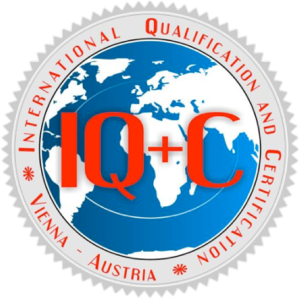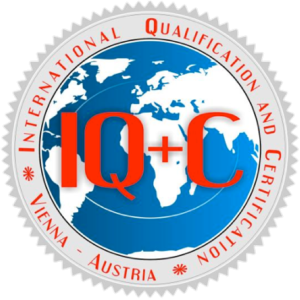Supplementary contractual terms as well as terms for auditing, certification and surveillance of a management system, for holding the certificate and using the certification logo.
0. Glossary
(1) Auditing is a systematic, independent and documented process used to obtain audit results and to evaluate these results objectively in order to determine to what extent the requirements of the certification basis have been fulfilled. The auditing service is rendered by authorised representatives of the certification body (auditors and/or experts).
(2) Certification refers to a formal certification of conformity by a certificate, based on the certification decision that the management system of the customer corresponds to the respective basis of certification. The basis of a certification is the written audit documentation. The certification service is rendered by certification representatives of the certification body.
(3) The certification body is the centre of competence for auditing and certification services.
1. Object of Agreement
(1) The object of the contractual relationship is auditing of the customer’s management system and (in the event of fulfilling the necessary conditions) attainment of certification as well as the associated surveillance for maintaining the validity of the certificate for the management system of the customer and the right of use of the certification logo for the customer.
(2) The management norms, rules and regulations agreed between the customer and the certification body as the basis of certification form the basis of the contractual relationship.
2. Duration of the contractual relationship
Start
(1) The contractual relationship begins on the date of the written consensual agreement between the customer and the certification body and ends with the expiry of the certificate’s validity period. However the contractual relationship is automatically renewed after the expiry of the certificate’s validity, with the same conditions, for three more years at a time, if there is consensus at the time of renewal about the further remuneration between the customer and the certification body for the coming period of three years.
End
(2) The contractual relationship ends on expiry of the period, without the need for a termination, if an agreement cannot be reached regarding the adjustment of the remuneration between the customer and the certification body for the coming period of three years.
Premature termination
(3) The contractual relationship can be terminated by the certification body or the customer in writing despite the time limitation and even without specifying the reason, subject to a termination period of one month given at the end of the month.
Termination for cause
(4) The contractual relationship can be terminated for cause by both the contractual partners at any time and without notice, in writing.
(5) An important reason exists for the certification body, particularly when The customer violates essential contractual obligations,
The customer is adjudged bankrupt or an application made against it for bankruptcy proceedings is rejected for lack of assets, The remuneration is not paid within the period fixed by the certification body
(6) An important reason exists for the customer, particularly when The certification body misuses the information made available to it about the customer’s company or The certification body violates essential contractual obligations.
3. Certification Procedure
(1) The certification body carries out the activities according to the description of the approved TÜV certification procedure and awards a certificate in case of a positive result.
(2) If non conformities are found during the audit that requires more than a correction of the written documents, then a re-audit may be necessary in certain exceptional cases.
(3) The assessment whether the audit and/or the certification result is positive and/or whether a re-audit is necessary is subject exclusively to the certification body. The decision is not subject to any recourse to the legal process by the customer.
(4) In case of a negative audit result the customer is granted a grace period for fault rectification and a re-audit, if need be. The concerned auditor or a certification representative decides the scope of the necessary measures for fault rectification. This decision also is not subject to any recourse to the legal process by the customer. If the grace period is not used by the customer or if the faults revealed couldn’t be rectified, the auditing and the certification are considered to be negative.
(5) In case of a positive certification decision as a result of a positive audit, a certificate is handed over to the customer by the certification body.
(6) The certification body will subsequently carry out yearly surveillance audits, which are necessary to maintain the validity of the certificate.
(7) In certain justified exceptional cases – especially in case of grave and plausible complaints by a third party against the certified company – an (additional) audit may be necessary at short notice for special reasons. The determination of the necessity is at the discretion of the certification body.
4. Validity of the certificate
(1) The validity of the certificate is three years from the date of issue on the basis of a positive certification decision, provided that all the conditions necessary for maintaining the validity are fulfilled by the customer.
(2) In particular, carrying out a yearly surveillance audit with positive surveillance decision and a valid contractual relationship are mandatory prerequisites for maintaining the validity of the certificate and the related authorisation for holding the certificate and using the certification logo.
(3) The certificates are the property of the certification body during their validity and become the property of the customer after their expiry.
5. Special obligations of the certification body
(1) The certification body handles all the information related to the customer’s company provided to it as strictly confidential, evaluates the information only for purposes of the object of agreement and does not forward it to third parties. Insofar as the certification body is obliged by law, regulation, decree or directive of an authority to disclose the customer’s confidential information to third parties, the customer (provided not ruled otherwise legally) will be informed in advance by the certification body
about this disclosure. The customer can discharge the certification body from these obligations of confidentiality in writing.
(2) The certification body nominates professional representatives (auditor and/or experts) for carrying out every audit. If these professional representatives of the certification body practise other occupations in addition to the audit job, the certification body shall inform the customer about this along with more detailed information (e.g. employer, company, type of occupation etc.). If the customer does not approve the choice of representatives of the certification body, it can inform the certification body in writing mentioning the reasons up to one day before the audit, however within 14 days of being informed. Subsequently, in consideration of the interests of the customer, the certification body shall decide once more about the nomination of professional representatives.
(3) The certification body issues the certificate depending on the presence of all the necessary requisites.
(4) The certification body records – except in case of explicit withdrawal by the customer – the certified company in its public directory stating the name, head office, certification basis and scope, after a positive certification decision and up to the time of termination of the contract.
(5) After issuing the certificate, the certification body instructs the customer about relevant changes in the certification procedure, which directly influence the customer.
(6) The certification body truthfully declares the certification status of the customer’s management system on request by a third party, as valid, suspended, restricted, revoked, cancelled or expired.
6. Special obligations of the customer
(1) The customer provides the certification body all the required materials, documents and information necessary to fulfil the obligations arising from the contractual relationship, i.e. particularly all the documents related to the management system (manual, process instructions etc.) at no cost.
(2) The customer nominates a management representative who lends gratuitous support to the representatives of the certification body (auditors and/or experts) and assists them in their activities in the customer’s company.
(3) The customer grants the representatives of the certification body (auditors and/or experts) and/or representatives of the accreditation body access to the concerned organisation units (domains, processes, personnel etc.) and allows the inspection of the required records (business cases, company records etc.).
(4) The customer permits the certification body to provide information about the former – particularly the certification document – to third parties (e.g. accreditation body, internal auditors of the certification body, committee for handling complaints and objections, committee for ensuring impartiality etc.), provided it is necessary to maintain the validity of the certification authority of the certification body or for handling complaints and objections. Further, the customer permits the certification body to send information about the former – particularly the certification document and parts of it – by post within the scope of the service rendered.
(5) The customer is obliged to record and archive all complaints regarding its management system and their correction and to show them to the representatives of the certification body (auditors and/or experts) during the audit.
(6) After the issue of the certificate, the customer is obliged to inform the certification body without delay in writing about any essential changes that influence or could influence the legal form and ownership of the company, the organisation and the management (e.g. key personnel, decision-making staff or technical staff), the contact addresses and locations as well as the scope of the certification (activities, processes, management system).
(7) The customer makes a payment to the certification body. The remuneration amount is based on the offer adopted by the customer and which has been prepared on the basis of the price list and the general terms and conditions of TÜV AUSTRIA CERT GMBH, provided a fixed or flat rate or any other allocation base has not been agreed in writing.
(8) The payment for the service rendered is due not later than four weeks after the “Onsite audit” (the relevant invoice is delivered). Non conformities that require documents or records to be handed over later do not delay the due date of the payment. In this case a brief status report is issued (audit performed, open non conformities). The end report is issued on receipt of the required documents.
7. Holding and using the certificate and the certification logo
Duration of the right of use
(1) The issue of the certificate authorises the customer to hold the certificate and use the certification logo.
(2) The right to hold the certificate and use the certification logo ends with the end of the contractual relationship.
Scope of the right of use
(3) The customer should not use the certificate and the certification logo in a misleading manner, rather they are always to be used in such a way that only inferences can be drawn from the issued certification, especially by third parties.
(4) The approval to hold the certificate and use the certification logo applies exclusively to the certified area of the customer’s company in direct connection with the company name or employer’s name or the company logo of the customer. Usage of the certificate and the certification logo for another - uncertified – area of the customer is not permitted. The area is determined by the certification body.
(5) The customer can use the certificate and/or the certification logo for business purposes on business correspondence documents (e.g. letterheads, visiting cards, e-mail etc.) and for advertisement purposes (e.g. company vehicles, website, brochures etc.) in the specified form. They can be used in any size while maintaining the proportions. The certificate and the certification logo should be easily readable and clearly visible. The usage should be such that neither the certification body nor the certification system is discredited or public trust in the certification is imperilled.
(6) The certificate and the certification logo should not be used on products or product packaging or even in connection with the products in such a way as to give the impression that the products themselves are certified. The certification body has a special product certification for this purpose.
(7) The customer is obliged to inform the certification body beforehand in writing about any proposed usage of the certificate and the certification logo and obtain a special usage approval for the particular case.
Suspension of the right of use
(8) The right of the customer to hold the certificate and use the certification logo is suspended by the certification body with immediate effect, if
- The certificate and/or the certification logo are misused by the customer, especially if any of the regulations concerning the scope of right of use are violated,
- The result of the surveillance audit does not vindicate the validity of the certification,
- Surveillance audits are not carried out due to reasons outside the control of the certification body,
- The certification is suspended according to the regulations of the certification body,
- The customer does not receive any approval or if the certification body issues a request – even without justification – to temporarily desist from holding the certification logo and/or the certificate.
(9) The customer is obliged to immediately desist from holding the certificate in case of suspension of the right of use by the certification body. Existing documents, media etc., which are endowed with the certificate or the certification logo, can be used by the customer for a maximum of one month from the time of suspension of the certification.
(10) The suspension can be revoked by the certification body again depending on the implementation of verified correction measures.
Termination of the right of use
(11) The right of the customer to hold the certificate and use the certification logo ends with immediate effect, if the validity of the certificate has expired, the certification is revoked according to the regulations of the certification body, the contractual relationship (due to whichever reasons) has ended, the customer receives a request from the certification body – even without justification – to temporarily desist from holding the certification logo and/or the certificate.
(12) The customer is obliged to immediately desist from holding the certificate and using the certification logo in case the right of use is terminated by the certification body.
8. Complaints and objections
(1) The customer has the option to enter a caveat against certification decisions or lodge a complaint in writing against the practices and omissions of the certification body to the management of the certification body.
(2) In this case the certification body provides a convincing justification to the customer for its certification decision, activity or omission.
(3) If no satisfying solution can be found or if the management of the certification body is itself directly concerned with the objection or complaint (conflict of interests), then the objection or complaint is forwarded to a separate committee – keeping the rules relating to confidentiality in mind – for decision-making.
9. Sample of the certification logo
(1) While fulfilling all the certification conditions, the customer is in principle authorised to hold a certification logo as per the guidelines of the certification body.
(2) The customer is obliged to inform the certification body beforehand in writing about any proposed usage of the certificate and the certification logo and obtain a special usage approval for the particular case.
Sample TÜV AUSTRIA certified sign
(Certification basis (Rulebook): year if necessary)
Certificate No............................




